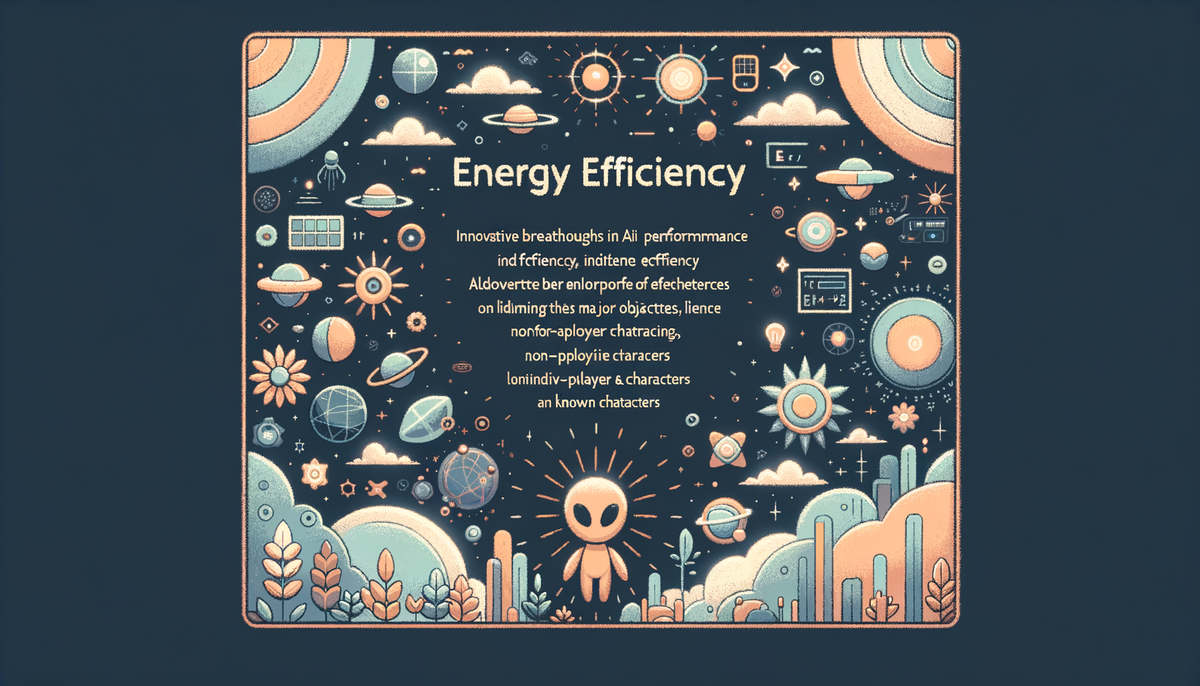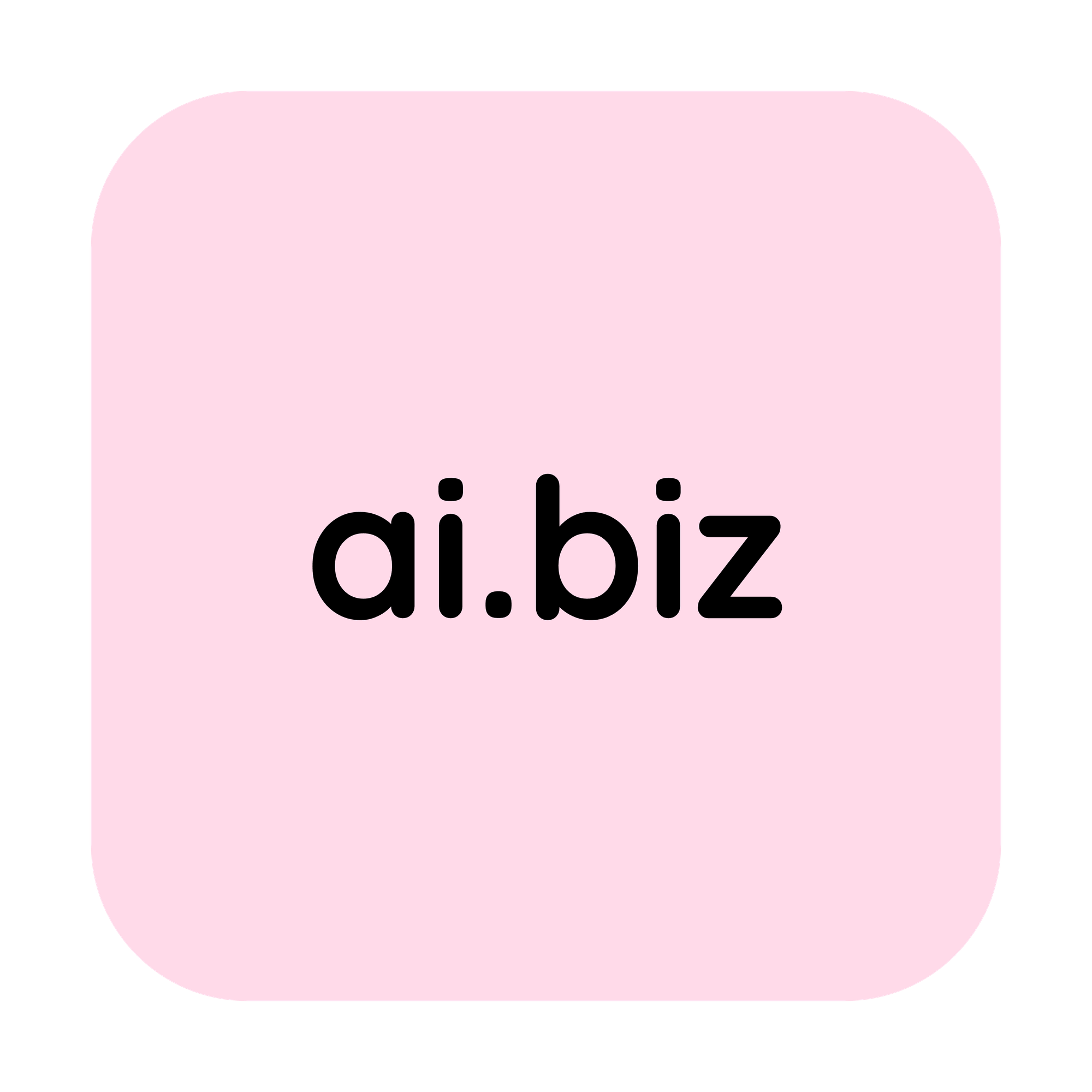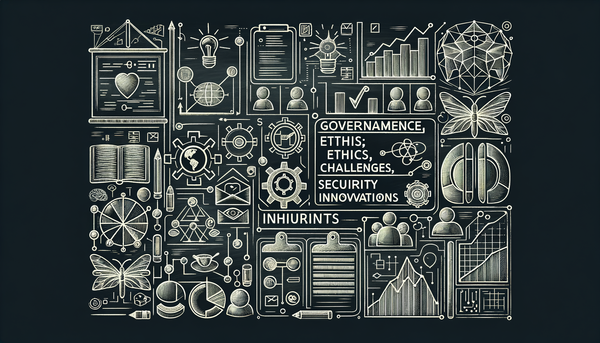Exciting Innovations in AI: A Daily Update

Innovative breakthroughs – from Nvidia's record-breaking mini PC dishing out over 2070 TFLOPS to Google's dramatic 33x reduction in the energy costs of AI queries – are rewriting how we think about performance, efficiency, and the integration of artificial intelligence in our daily digital interactions.
Revolutionary Hardware Pushing the Boundaries
The unveiling of Nvidia’s fastest mini PC, which reportedly surmounts the incredible 2070 TFLOPS benchmark, represents a significant leap in hardware capability. In a market hungry for compact yet powerful computing solutions, such breakthroughs signal the emergence of devices that can power intensive AI and graphics applications in spaces once thought impassable. When we witness a mini PC that not only outperforms its predecessors but also makes design statements – reminiscent of a squint to see hints of an RTX 5090 – it challenges users and developers alike to rethink the limits of form and function.
Alongside Nvidia’s marvel, there is another exciting contender in the realm of high performance computing. The Geekom A9 Max, touted as possibly the fastest PC under $1000, combines affordability with high-grade performance by running on an AMD Ryzen AI 9 HX370 APU and driving four 8K monitors with ease. This trend toward democratizing powerful hardware capabilities encourages a wider range of AI applications, from advanced gaming to creative design workflows. For tech enthusiasts at AI.Biz, such innovations invite us to explore further, as seen in our detailed insights on AI Podcast updates and industry trends.
These hardware improvements not only push the envelope in terms of data processing and graphics rendering but also serve as a catalyst for optimizing the ways in which developers implement AI models on everyday devices. An upgrade in processing power paves the road toward faster training of machine learning models and smoother real-time interactions, which has profound implications for both consumer technology and enterprise applications.
Meta’s Strategic Licensing and the Creative AI Wave
A notable move in the creative sphere comes from Meta, which has begun licensing Midjourney’s AI image and video technology. This collaboration signifies a merging of creative ingenuity with the algorithmic precision of artificial intelligence. By harnessing sophisticated image and video generation techniques, creators now have access to powerful tools that can drive the future of digital storytelling and visual content creation.
In an era where content is king, innovations like these are set to empower artists, advertisers, and digital media professionals. One could even say that it brings to mind a modern version of the Renaissance, where technology and art converge to create works that are both inspired and algorithmically precise. For those following industry shifts, discussions on these developments can be explored further in our daily updates and trends section.
This licensing strategy is not only about expanding Meta’s portfolio, but it is also a testament to the broader movement of integrating AI into creative processes. As creative professionals adapt to and adopt these tools, we see an increasing overlap between human creativity and machine precision. As Fei-Fei Li once remarked,
Artificial intelligence is not a substitute for natural intelligence, but a powerful tool to augment human capabilities.
This perspective underlines the potential of these technologies to foster enhancements across multiple industries.
Driving Energy Efficiency in AI Operations
While the race for higher performance and compact powerhouses heats up, another critical area receiving attention is energy efficiency. Google’s claim that it has slashed the energy cost of its AI queries by an impressive 33x over the past year resonates deeply in an ecological and economic context. This development is especially significant as data centers and cloud AI services strive to balance speed with sustainability.
The drive for energy efficiency not only reduces operational costs but also diminishes the environmental footprint of large-scale AI deployments. Innovations in hardware, such as those developed by Nvidia and AMD, are undoubtedly contributing factors in this regard. By streamlining the energy demands of AI computations, we are inching closer to a future where high-speed processing does not compromise ecological responsibility. Curious minds at AI.Biz might find further explorations on AI’s future in our discussions about breakthrough technological shifts.
Moreover, such advancements spark interest in the research community. They highlight the possibility of creating more robust, scalable, and environmentally friendly AI infrastructure. With the confluence of advanced hardware and smarter energy management practices, our digital future promises to be both innovative and sustainable.
Enterprise Trends: Security, Productivity, and the AI Workday
Another evolving facet of the technology landscape is the seamless integration of AI and hardware into the workplace. In today’s dynamic professional environment, organizations are rapidly reconfiguring their processes to embrace intelligent technology solutions. The interplay between AI integrations in devices like Macs and the inherent security challenges in enterprise systems is drawing significant attention.
The recent analysis on Apple’s deployment of AI-enhanced security features in the workplace under the theme “Apple @ Work: Macs, AI, and the blind spot in enterprise security” highlights that even long-established tech giants are consistently refining their innovations to address emerging digital threats. This convergence of productivity tools and AI-driven security protocols presents exciting opportunities for smarter, safer work environments.
As professionals adopt new hardware and software solutions, businesses benefit from increased productivity and fortified defenses against cyber-threats. Discussions on how these integrations are shaping the future of work are gaining momentum, and interested readers can dive deeper by checking out related topics on our AI Insights episode on future technology.
Global Market Movements and the Investment Landscape
Investing in technology and AI is not solely an exercise in following engineering breakthroughs; it also involves understanding market dynamics and ownership patterns. A recent report indicating that the U.S. holds 9.9 percent of Intel may seem like a data point geared toward geopolitical strategy or national interests. Nevertheless, such details intertwine with the broader narrative of global supply chains and financial stability in the tech sector.
Additionally, the looming question of whether the AI bubble might burst and rock financial markets has been a subject of heated debate. With rapid technological advancements and the influx of investments flooding into AI, the market sometimes appears overvalued under the weight of exuberance. Economists and analysts continue to watch closely for signs of market corrections, and while caution may be warranted, there is also a strong case for sustainable growth grounded in genuine technological progress.
It is important to note that these market trends do not diminish the underlying innovations taking place on the ground – rather, they illustrate the complex tapestry of finance, technology, and global strategy. For readers interested in a balanced view of these market sentiments, further commentary is available in global tech reviews and investor insights featured on our site.
Mobile Innovations and the Battle for Consumer Attention
The ongoing rivalry between tech giants, particularly in the mobile arena, continues to spur innovation and consumer excitement. Recent comparisons between the latest Pixel 10 launch and iPhone offerings hint at intriguing possibilities for future device functionalities. Despite being a devoted iPhone fan, many find that features showcased in the Pixel 10 – from advanced AI-centric camera capabilities to innovative design tweaks – spark a renewed sense of competition that ultimately benefits the consumer.
Dynamic mobile ecosystems are now leveraging both hardware innovations and cutting-edge AI to provide more personalized and intuitive user experiences. Whether it is through improved image processing or enhanced voice recognition, manufacturers are embedding AI deeper into the fabric of everyday technology. These competitive developments drive forward the standards of what consumers can expect from their devices, making the tech ecosystem more vibrant and user-centric.
Deals and promotions during events like Labor Day further underline this competitive spirit. Sales events featuring products from brands such as Apple, Sony, and Shark not only showcase their latest innovations but also invite consumers to experience next-generation technology at accessible price points. For tech aficionados looking to snag a great deal while staying ahead of the curve, this period serves as an opportune time to explore the best offerings available – a topic we regularly touch on in our AI Podcast updates on industry innovations.
The Hidden Ingredients Behind AI Creativity
Beyond the impressive hardware and the observable market trends lies the intricacy of artificial intelligence itself. Wired’s exploration into the hidden ingredients behind AI’s creativity reveals a multilayered process where data, algorithms, and nuanced human creativity come together in unexpected ways. At its core, AI creativity stems from the interplay of vast datasets, intricate neural network architectures, and the continuous learning from human inputs.
This deeper dive into how machines mimic and sometimes even enhance creative processes challenges the traditional boundaries between human and machine-generated art. The research highlights the pivotal role of randomness and structured patterns working in tandem – a balance that is reminiscent of the natural order seen in both art and science.
Of course, such revelations bring to mind the wise words of A.R. Merrydew who noted,
Amazing, isn’t it? You have the intelligence to navigate some unfathomable distance across the void. And yet you are too dim to understand the language of the species you encounter upon your arrival.
Though delivered with a whimsical twist, this quote reminds us of the inherent mysteries in designing creative AI systems.
The continuous pursuit of understanding what makes AI creative not only furthers academic and industrial research but also paves the way for smarter, more intuitive creative tools. This area of inquiry is likely to expand our horizons and fuel debates in AI ethics, intellectual property, and art over the coming years.
Interlacing Innovation with Everyday Technology
From cutting-edge mini PCs to AI-powered mobile devices and energy-efficient data processing, the convergence of hardware and artificial intelligence is nothing short of a technological renaissance. These advances have already started to reshape lives and industries, whether it's the way enterprises approach cybersecurity or how creative agencies compose visual narratives.
It is a reminder that the evolution of technology is as much about the tools as it is about the people who use them. As we embrace these transformations, it is invaluable to remain both curious and cautious. Whether it is through the lens of hardware upgrades, inventive licensing strategies, or energy optimization, the continuous quest for innovation assures that each breakthrough is a stepping stone for a smarter future.
With every stride in performance and efficiency, we are offered the chance to re-imagine our digital landscapes and harness the true potential of AI. For those interested in staying updated on the latest developments in both the technical and strategic realms of artificial intelligence, our repository of in-depth AI podcasts serves as a continual source of insights and inspiration.
Looking Ahead: A Future Powered by Innovation and Insight
When high-powered hardware, strategic licensing, and energy-efficient computations collide with creative ingenuity, the result is a vibrant ecosystem ripe with possibility. The journey of AI integration, from impactful mini PCs to transformative mobile innovations, paints a picture of an industry that is both dynamic and full of potential.
In pondering the path forward, it’s inspiring to reflect on how every new development – whether it is measured in teraflops or in the quiet shift towards eco-friendly processing – contributes to a larger narrative of progress. To quote Fei-Fei Li,
I imagine a world in which AI is going to make us work more productively, live longer, and have cleaner energy.
This vision reminds us that beyond the buzzwords and headlines lies a commitment to enhancing everyday life through smart, sustainable technology.
As the AI landscape continues to evolve, we remain at the cusp of further breakthroughs that promise to redefine our interactions with digital systems. So, whether you're a tech enthusiast, a creative professional, or an industry insider, now is the perfect moment to explore and engage with these innovations as they unfold. The future is not just arriving – it’s being built one breakthrough at a time.
Further Readings
- Nvidia’s Fastest Mini PC Unveiled
- Meta Licensing Midjourney’s AI Tech
- Geekom A9 Max – The Fastest PC Under $1000
- Google’s 33x Energy Efficiency Breakthrough
- U.S. Ownership in Intel: A Closer Look
- Pixel 10 Launch Versus iPhone Innovations
- Apple @ Work: Macs, AI, and Enterprise Security
- Labor Day Tech Sales for 2025
- Is the AI Bubble About to Burst?
- The Hidden Ingredients Behind AI’s Creativity




